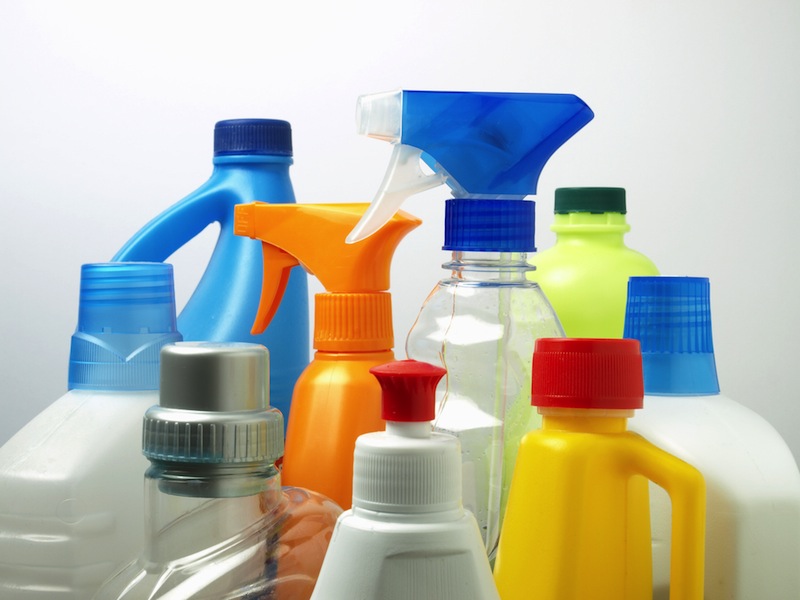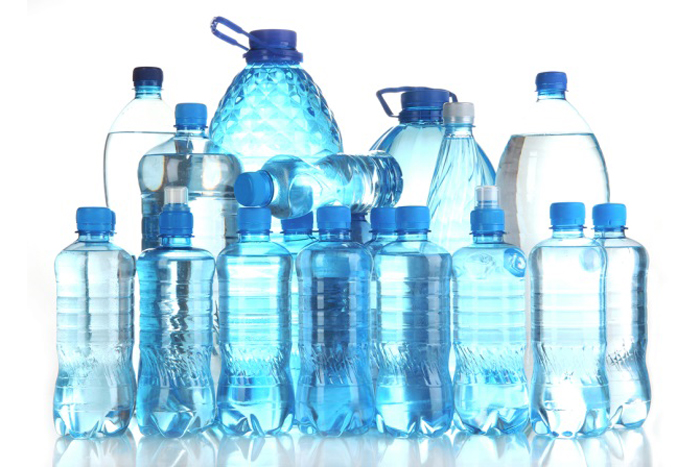12 Worst Hormone-Disrupting Chemicals & Their Health Effects

Environmental Working Group, an organization that advocates against the use of toxic chemicals, has released a list of the 12 worst hormone disrupting chemicals.
Here is our breakdown of the list, which includes information from Environmental Working Group (EWG) and other sources:
Bisphenol A (BPA)

This chemical is found in many products, including canned foods, plastics, and dental sealants, and is similar in structure to the hormone estrogen. Studies have linked BPA exposure with many health problems, including obesity, early puberty and miscarriage. However, these studies only show associations, and cannot prove that BPA exposure actually causes these conditions. Whether levels of BPA in the environment are harmful to people is still being studied.
Dioxin

These are long-lived chemicals that are widely found in foods, and accumulate in animal fatty tissue, according to the World Health Organization. They have been linked to lower sperm count and other reproductive system effects, according to EWG. Chronic exposure to dioxins has been linked to immune system problems and cancer. But while the chemical is known to be toxic at high levels, "background" exposure (exposure to normal levels in the environment) is not expected to affect human health on average, WHO says.
Atrazine

This commonly used pesticide can contaminate drinking water, EWG says. In animal studies, it has been linked to tumors, delayed puberty and prostate inflammation, and is known to turn male frogs into females, EWG says. In 2000, the Environmental Protection Agency determined that atrazine is not likely to cause cancer in people. However, the agency is currently reviewing the "state of the science" on atrazine and its health and environmental effects "to ensure that the agency’s regulatory decisions continue to protect public health and the environment," the EPA says. Buying organic produce and using a filter for drinking water can reduce exposure to atrazine, EWG says.
Phthalates

These chemicals are used in plastics to make the material more flexible, and in many products as dissolving agents, according to the Centers for Disease Control and Prevention. They can be found in detergents, plastic clothes (raincoats) and even personal care products, such as soaps, shampoos and nail polishes, CDC says. Animal studies suggest that phthalates can affect the reproductive system, but the effect on humans from exposure to low levels of phthalates is unknown, the CDC says. To lower phthalate exposure, people can avoid plastic food containers and plastic wrap made from PVC, EWG says. Personal care products that list "fragrance" as an ingredient may also contain phthalates. EWG says.
Perchlorate

This chemical is used to produce rocket fuel and other explosives, and it can be found in many produce and milk products, EWG says. Too much perchlorate can affect the ability of the thyroid gland to make hormones. Although it is hard to avoid perchlorate in food, people can reduce the effects of the chemical by making sure to consume enough iodine in the diet, EWG says. The EPA is developing regulation that would put a limit on the amount of perchlorate that can be in drinking water. A reverse osmosis filter can also reduce levels of perchlorate in drinking water, EWG says.
Fire retardants

Chemicals used as fire retardants, called polybrominated diphenyl ethers (PBDEs) are very persistent in the environment. They can disrupt thyroid activity, and have been linked to health effects such as lower IQ, according to EWG. Many PBDEs have been phased out, but because of their long-life, they will likely contaminate wildlife for decades, EWG says.
Lead

This is a well-studied toxin, and has been linked to brain damage, lower IQ, hearing loss and nervous system problems, EWG says. But lead has also been found to affect hormones. In animals, lead can lower sex hormone levels, EWG says.
Perfluorinated chemicals (PFCs)

These chemicals are found in no-stick cookware and are very persistent. Some PFCs have been linked to lower sperm quality, low birth weight and thyroid disease, among other problems, EWG says. However, these studies cannot prove PFCs causes these problems, so more research is needed to better determine the effect of PFCs on the human body.
Mercury

This metal is known to interfere with fetal brain development. It can also bind to a hormone that regulates woman's ovulation, and can damage cells in the pancreas that produce the hormone insulin, EWG says. The organization recommends eating wild salmon and trout to reduce mercury exposure. The EPA recommends that women who are pregnant or considering becoming pregnant consume no more than 12 ounces (2 average meals a week) of fish low in mercury (canned light tuna, salmon, pollock, and catfish.)
Arsenic

This element is naturally found in the environment, and also in some pesticides, and so it can find its way into food and drinking water. One form of arsenic, inorganic arsenic, is a known carcinogen, and chronic exposure to low levels of it has been linked to increased risks of bladder, lung and skin cancers. The element may also interfere with the way the body processes sugars and carbohydrates, EWG says. The Food and Drug Administration said recently that levels of arsenic in rice do not appear to pose health risks over the short term, but the agency is still investigating the potential long-term effects.
Sign up for the Live Science daily newsletter now
Get the world’s most fascinating discoveries delivered straight to your inbox.

Rachael is a Live Science contributor, and was a former channel editor and senior writer for Live Science between 2010 and 2022. She has a master's degree in journalism from New York University's Science, Health and Environmental Reporting Program. She also holds a B.S. in molecular biology and an M.S. in biology from the University of California, San Diego. Her work has appeared in Scienceline, The Washington Post and Scientific American.










